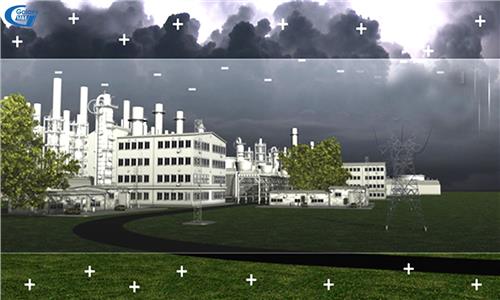Some facts people don't know about the inventor of the lightning protection system
Who is the man on the 100 USD bill? Is it the first President of the United States? No, it is the father of the lightning pole - Benjamin Franklin.
Although there are many new devices to combat the impact of lightning on construction works, lightning rods still seem to be the most common and applied method. Lightning rods were invented in1752. Over 2.5 centuries, the lightning rod has remained a guard to houses and ships during transit. The father of the lightning rod was Benjamin Franklin, a physical scientist, also a hero to American people and humanity in general.
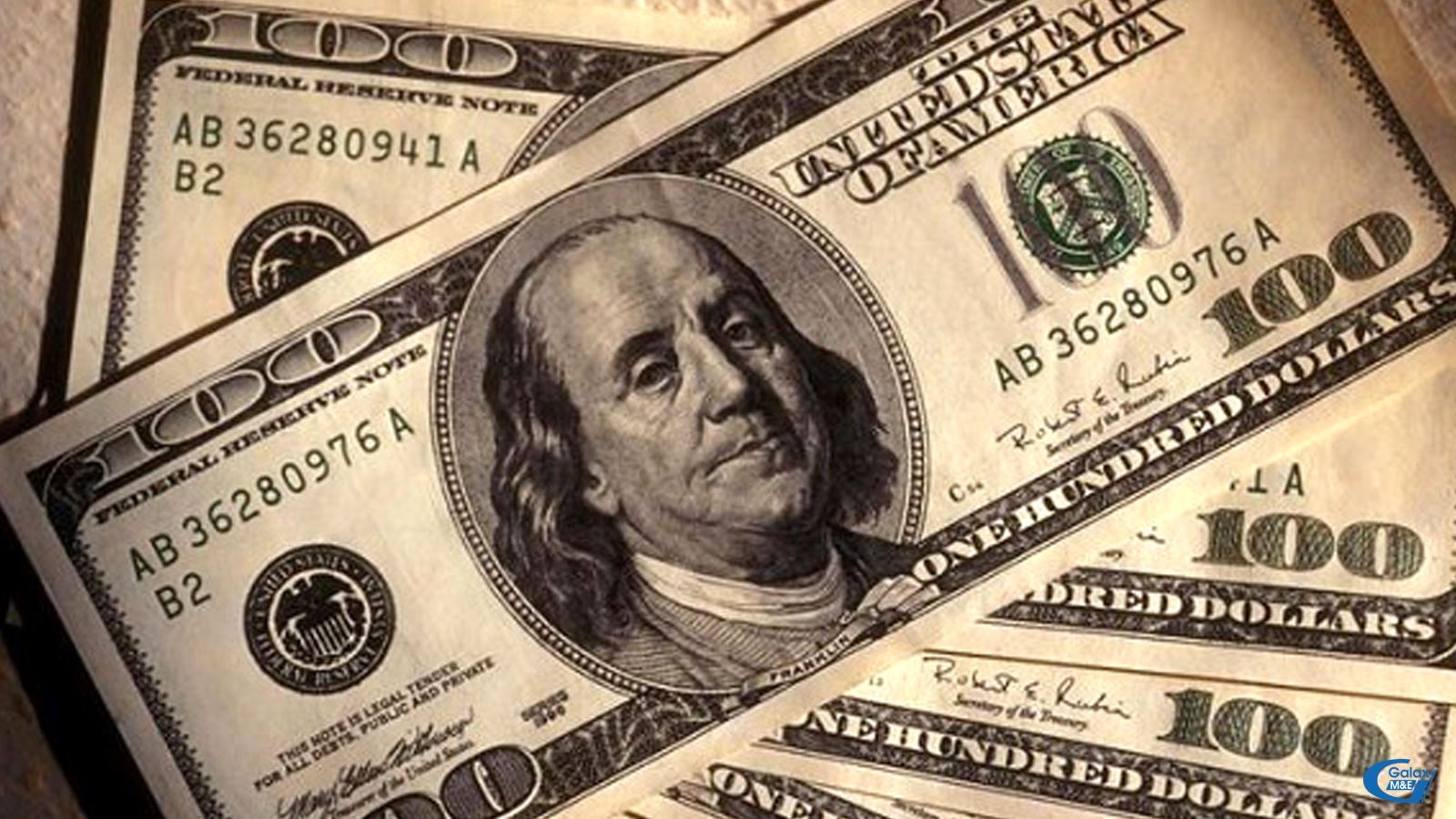
Benjamin Franklins face is on all 100 USD bills.
Benjamin Franklin can be considered a hero to humanity. He has made great contributions to the formation of the United States, prosperity, freedom and democracy. He was also a great inventor, a brilliant thinker, a brilliant businessman and a respectable politician whether or not they sided with the United States. In the eyes of the American people, he was the Founding Fathers.
In order for today's generations, even the entire human race, to view the United States as a belief and protection for the values of democracy - freedom - prosperity, Benjamin Franklin experienced a lot of storms and tribulations.
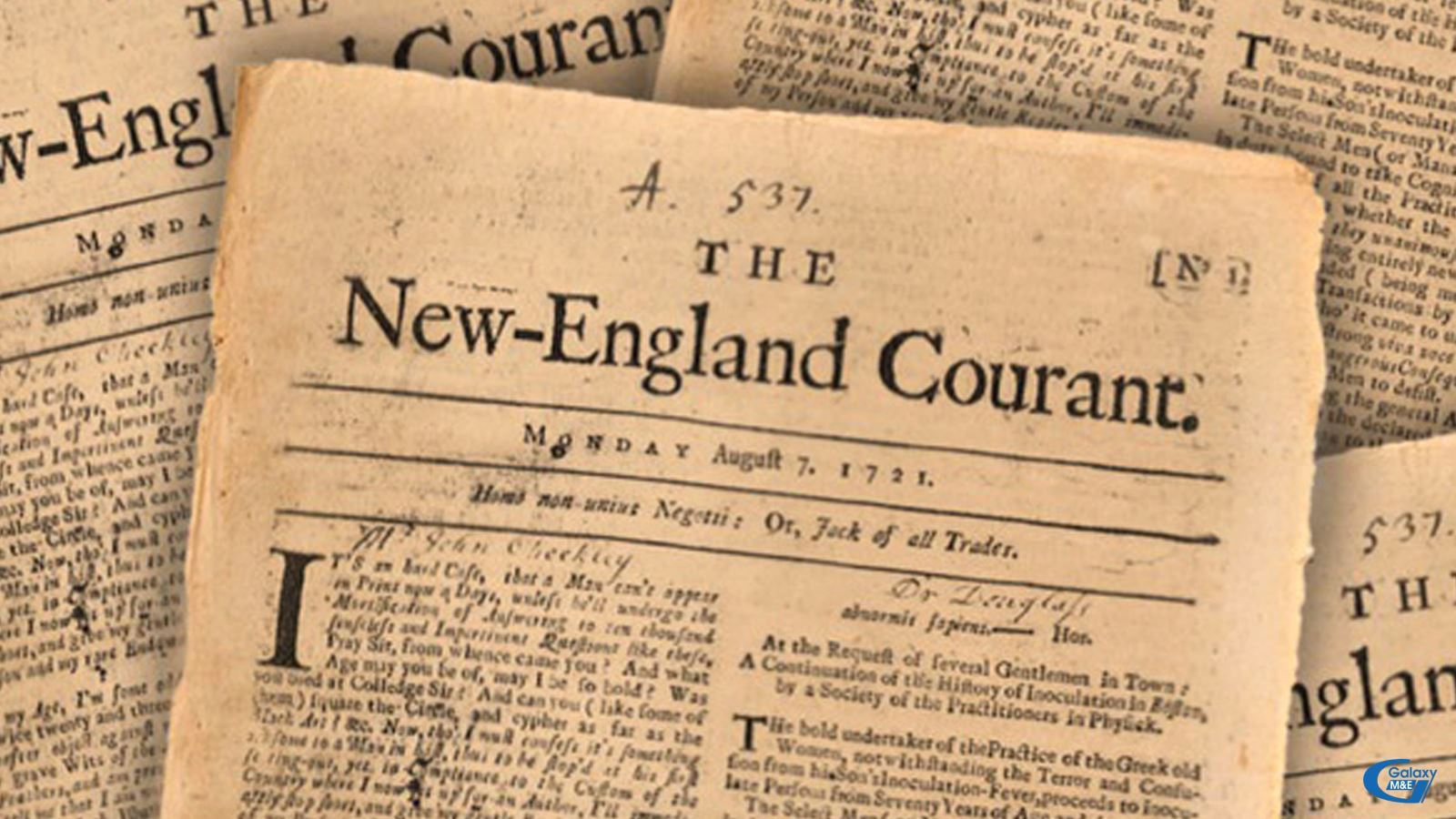
Many of Franklin's readers find great interest in his articles.
Tough childhood
Benjamin Franklin was born on January 17th, 1706 in Milk Street, Boston. His father, Josiah Franklin, was a man who made candles, soaps, and sold groceries. His mother was Josiah's second wife. Franklin was the 15th child that his father had, out of a total of 17.
Due to the decline of his father's business, at the age of 10, Benjamin Franklin was forced to quit school. At the age of 12, he started working for his brother's printing workshop. Due to his eagerness to learn, he dedicate himself to the information he had.
In 1721, James Franklin created a newspaper named New England Courant. This was considered the first independent newspaper of the United States. At that time, he expressed his intention to write an article for the newspaper but it was rejected. He then sent post by post with the name Mrs Silence Dogood, and surprisingly, many of his articles attracted the special attention of the public. It addressed many social issues. However, James was very upset when he discovered that the author of these articles were Benjamin Franklin.
At the age of 17, Franklin left home to find a job in Philadelphia. The following year, the boy to earn a living.
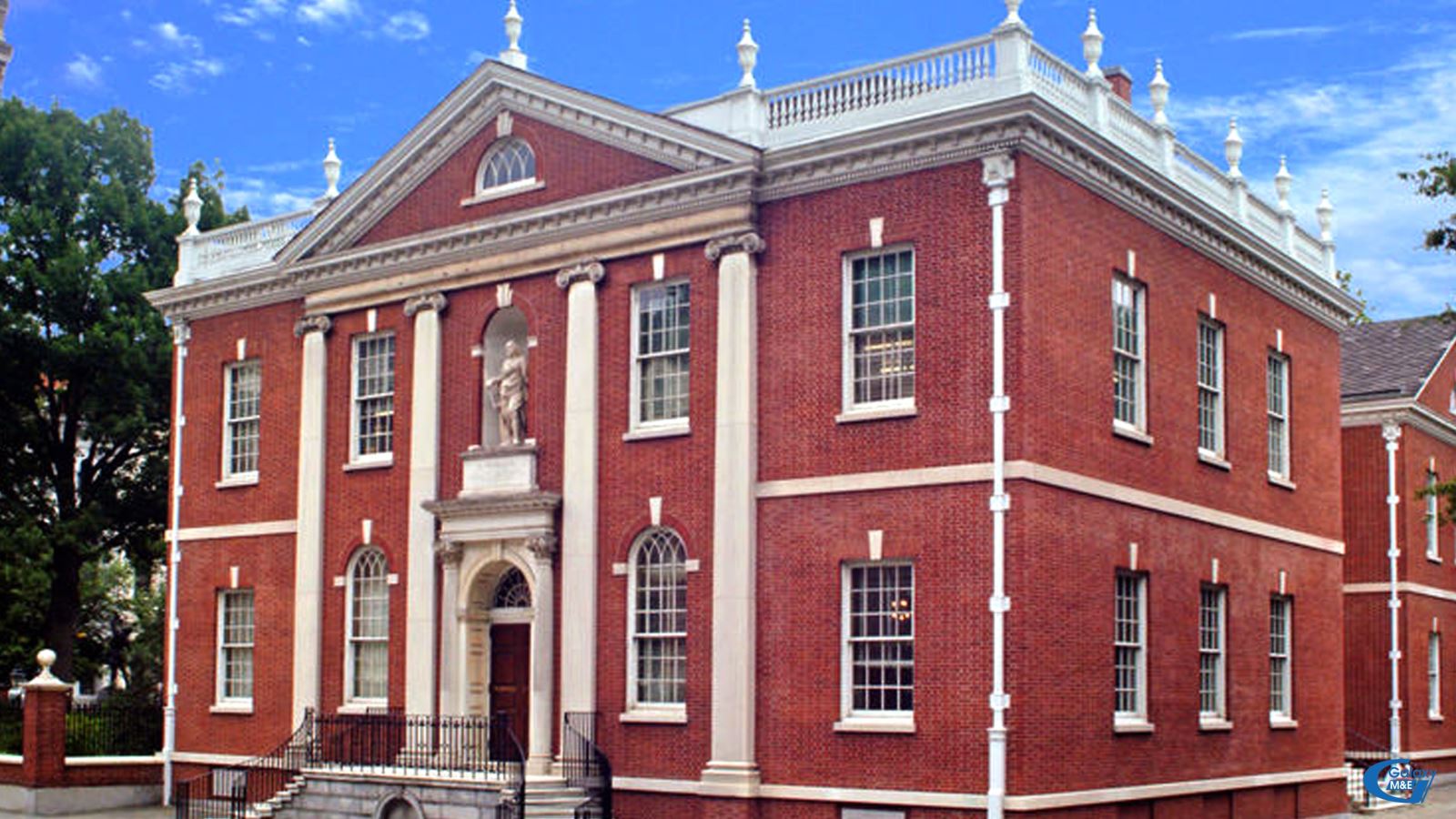
Philadelphia Library in the United States.
From poor boy to founder of the American Philosophical Society
Witnessing the stagnation of society, in 1727, Benjamin Franklin created an association named Junto, consisting of workers and merchants hoping to improve themselves and the community. The arrival of Junto sparked a movement to form various social and professional organizations in Philadelphia.
One of Junto's most important activities was reading. To get more books for everyone to read, Franklin created the Library Company of Philadelphia. The cost of buying books came from members whom contributed, and that paid the fee. The company still exists today and has become one of the greatest libraries in the world.
In 1730, Franklin set up his own printing workshop, while creating The Pennsylvania Gazette newspaper. The newspaper quickly became a forum for social reform. As the editor and writer of important articles proposing revolutionary ideas, Benjamin Franklin quickly gained the reputation of a wise inventor.
In 1731, Franklin became one of the leaders of Freemasonry in America. He began to write books about the principles and activities.
In 1743, he founded the American Philosophical Society.
During those years, the accumulated knowledge of science and technology helped him create great inventions for mankind.
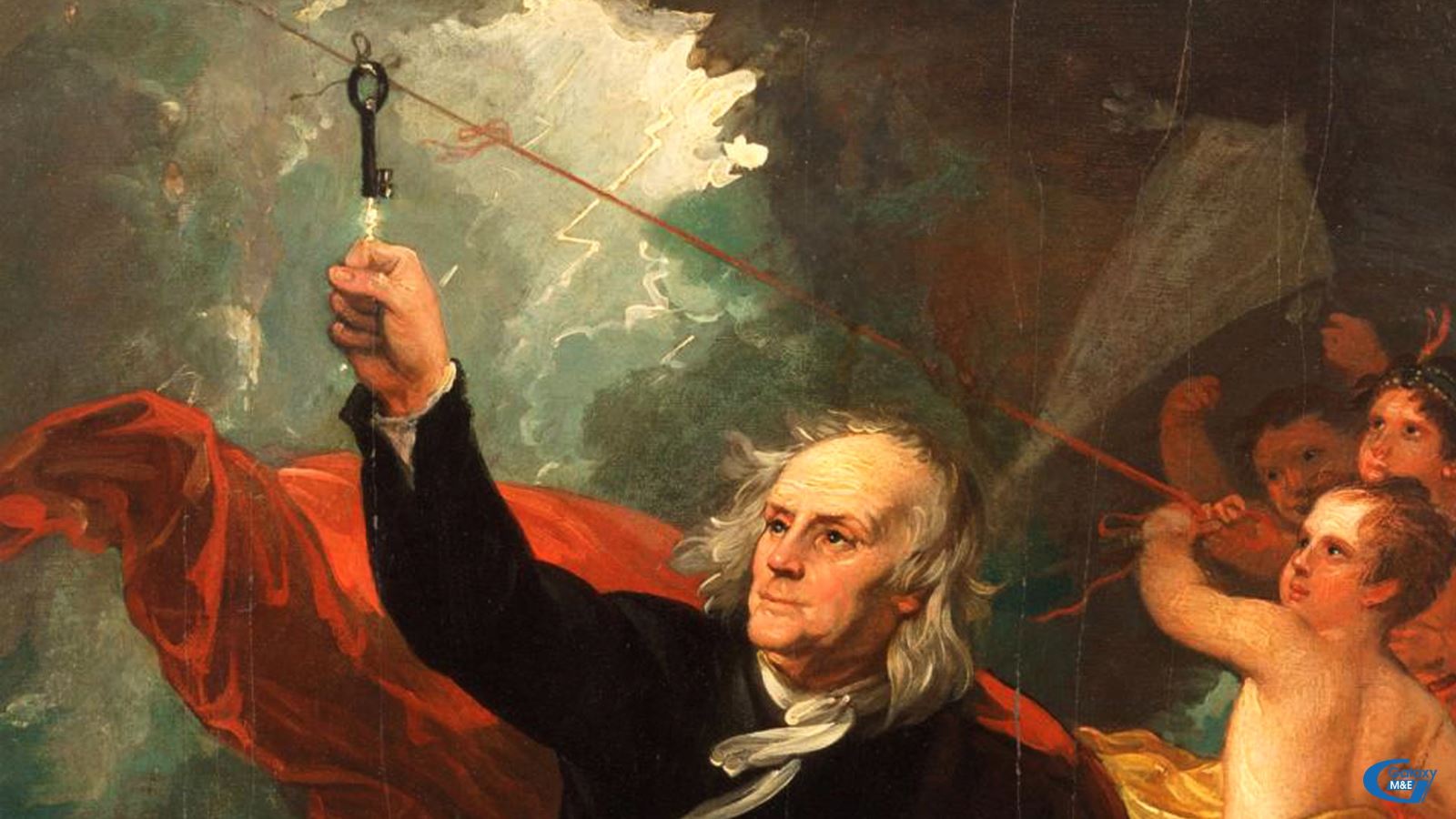
Franklin built a simple kite and attached a string to its top to act as a lightning rod. At the bottom of the kite, he attached a hemp rope, followed by a silk thread. Why both? Hemp, wet by rain, will quickly conduct electricity. Franklin kept the silk thread dry in the doorway of a warehouse which imposed no danger. The last piece was the metal key, which Franklin then attached to the hemp rope. With the help of his son, the kite was in the air and the experiment began. As the rain and thunder began, he noticed the loose threads of the rope standing upright, as if they were hung on a common conductor. Franklin moved his finger near the key, and when the negative charges in the metal were attracted to the positive charges in his hand, he felt a spark. This experiment was a prerequisite for Franklin to invent the lightning rod.
He discovered two types of electricity and called them electro-negative and positive. He stated the principle of conservation of charge. He categorized substances into conductors and insulators, so that there was no danger that threatened lives when collecting electricity from the clouds. He was the first to discover the difference between the wind's direction during a storm and the direction of its movement, which is very important for storm forecasting. He discovered the principle of cooling by evaporation and created a temperature of minus 14 ° C during summer by evaporating ether.
He had inventions that entered the history of world science and technology. Among them are lightning rods, Franklin stoves, bifocals, soft catheters, …
In 1753, Franklin was awarded the Copley Medal of the British Royal Society. In 1762, he was awarded an honorary doctorate by the University of Oxford.
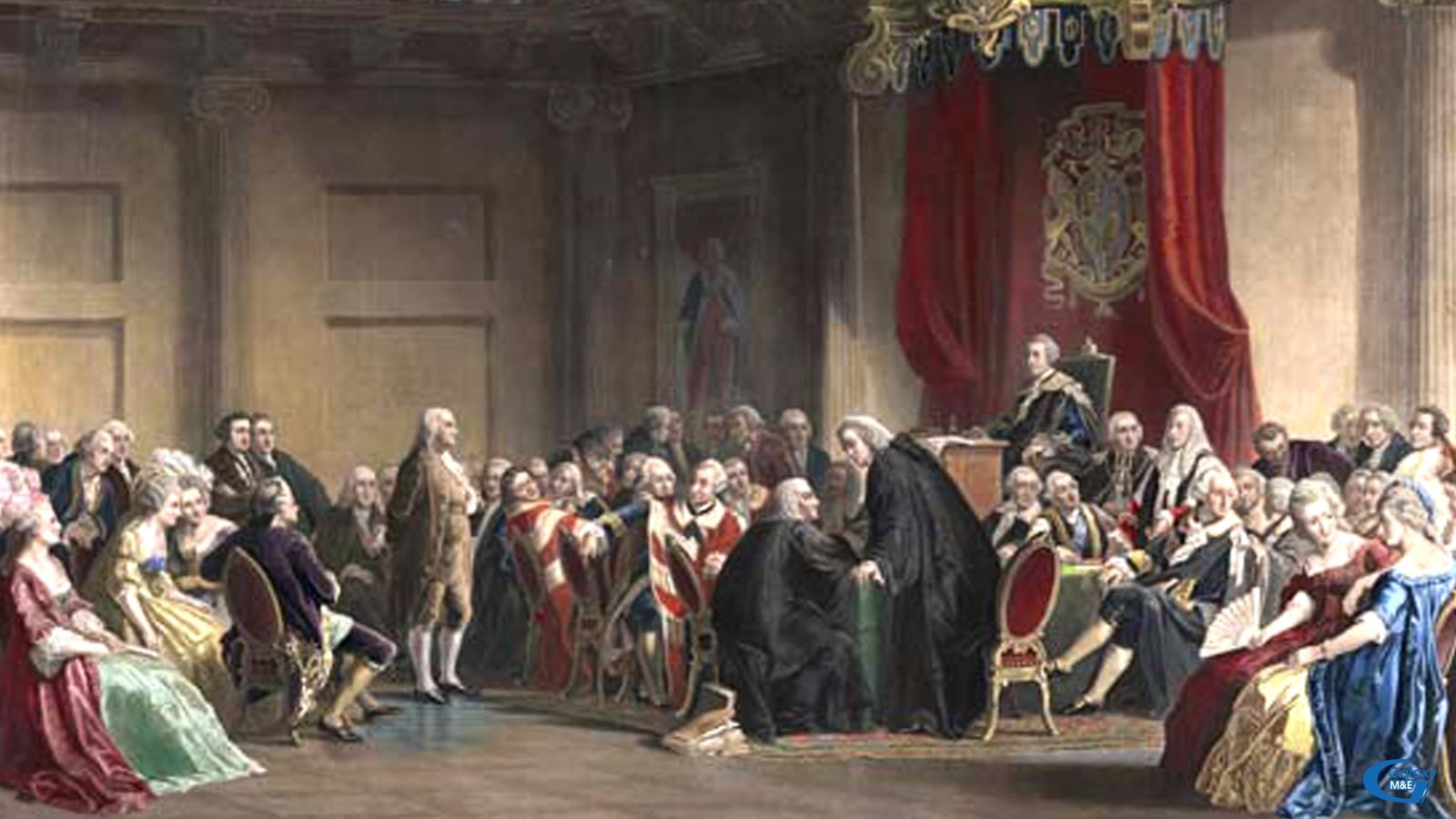
The painting depicts Benjamin Franklin in England in 1774. Before the American revolution broke out, he did his best to convince the British colonies.
The most dangerous person in the eyes of the British Monarchy.
In the late 1740s, Franklin began his activities as a government official working for Pennsylvania government (not yet established as the United States of America). He also undertook diplomatic affairs with the United Kingdom and France.
In 1751, he was elected to the Pennsylvania parliament.
In 1754, Franklin led the Pennsylvania delegation to attend the Albany Congress. There, he was issued a declaration of colonial Union. Although the manifesto was not adopted, it was the ideological basis for the Constitution of the United States of America later.
From 1757 to 1762, Franklin lived in England to devote himself to the struggle against certain British Imperial figures in the United States, and to claim economic and political rights for British colonies in the United States.
In 1763, on behalf of the Pennsylvania administration, a rebellion started. Those who participated in the revolt then waged a brutal revenge against the Indians. After that incident, Franklin loudly condemned the racist views of people from European descent.
In the years 1764 to 1774, Franklin was constantly present in Europe to campaign for the liberation of the colony. By 1775 he was the most dangerous element in the eyes of the British Royal Family. In March of that year, he left England to return to the United States.
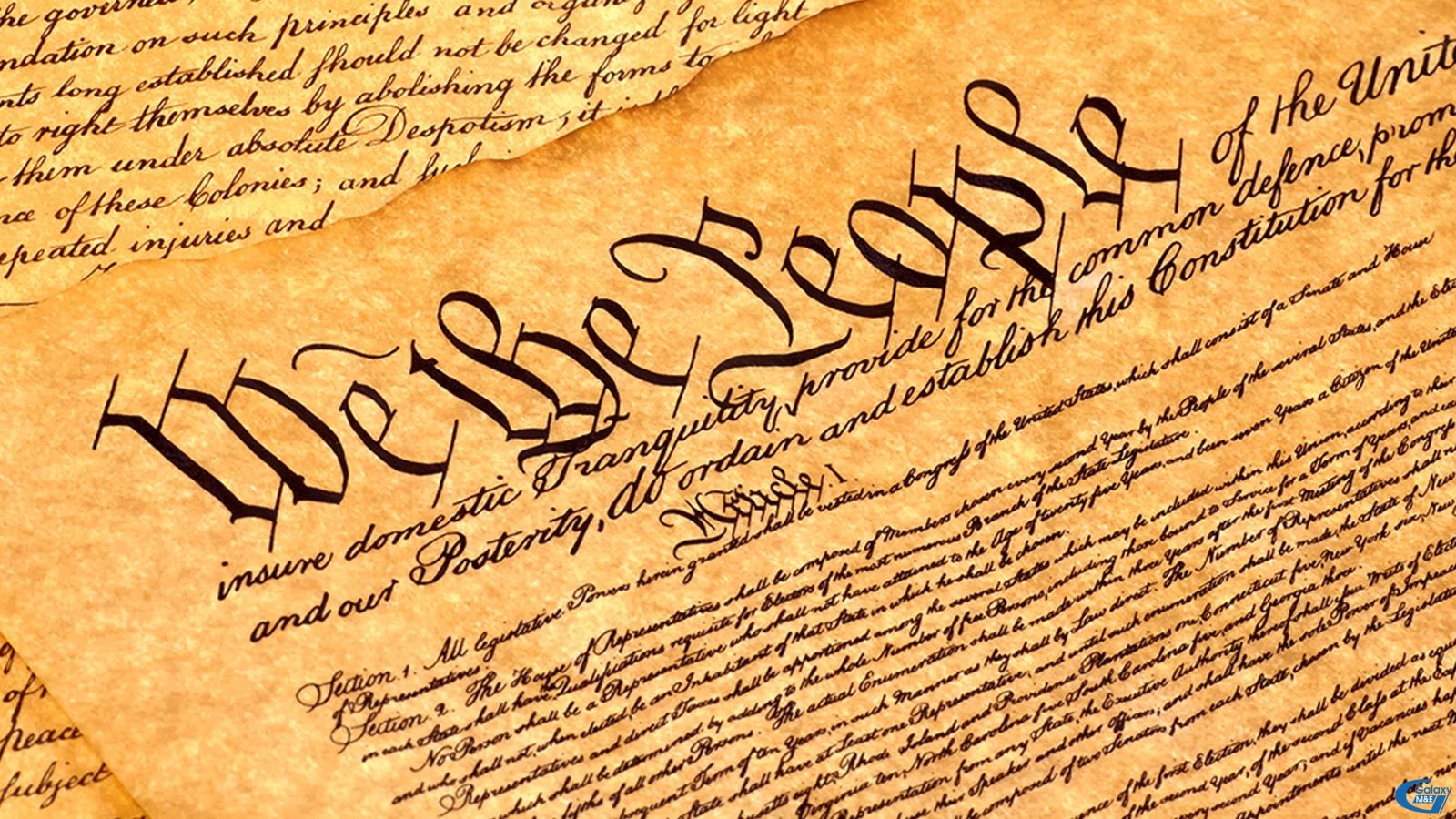
The United States Constitution drafted on September 17th, 1787, was the supreme law of the United States. It is based on the ideology of three powers divided between the legislative branch (the National Assembly), the executive branch (the President) and the judicial branch (the Court) initiated by Montesquieu, the French philosopher. The Constitution was declared a ratification after conferences in the first 13 states. Together with the Declaration of Independence, written in 1776, this Constitution showed the American spirit of science, progress and humanity in building the first republic in the world. It created a unified and more centralized government under Union Terms.
The only man who signed the Four Founding Documents of the U.S.
On 5/5/1775, the American revolution broke out. During this war, several regions (which later became states) joined together against British rule. Franklin was chosen as the representative of Pennsylvania to attend the Second Colonial Congress.
In 1776, Franklin was one of the five drafters of the Declaration of Independence (on the basis of Thomas Jefferson).
In December 1776, Franklin went to France as a US envoy and worked there until 1785. During this time, he persuaded the French government to join a military alliance with the United States. His reputation in France was so great that hanging his portrait in houses became fashionable. One man, Le Ray Chaumont, hired Duplessis to paint his portrait. To this day, the original version of this portrait is still hanging in the National Portrait Gallery in Washington D.C, which is the original version of Benjamin Franklin's portrait in the US $ 100 note.
In 1785, when he returned to the United States, Franklin became the second most influential person in this country, after George Washington.
In the last years of his life, he devoted himself entirely to the work of freeing slaves, mainly black Africans.
Franklin was the only one who left a signature in all four US founding documents, including the Declaration of Independence and the Constitution.
Benjamin Franklin was also gifted and involved in artistic activities. He used to play a variety of musical instruments and composed music. He has been a member of the Royal British Art Association for many years. 200 years later, in 1956, the association created the Benjamin Franklin Medal to award outstanding artistic talents.
From a religious perspective, Franklin believed in Jesus, but not in the Catholic church. In terms of virtue, throughout his life he always maintained 13 virtues: calm, quiet, tidy, assertive, thrifty, diligent, sincere, fair, clean, calm, simple, modest (temperance, silence, order, resolution, frugality, industry, sincerity, justice, moderation, cleanliness, tranquility, chastity, humility).
Benjamin Franklin passed away on April 14, 1790 in Philadelphia.










